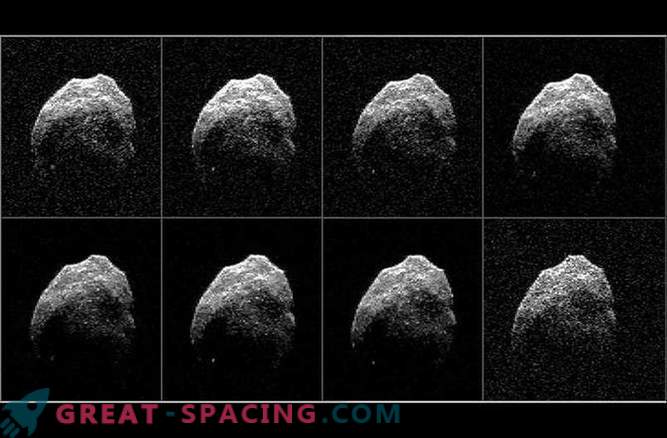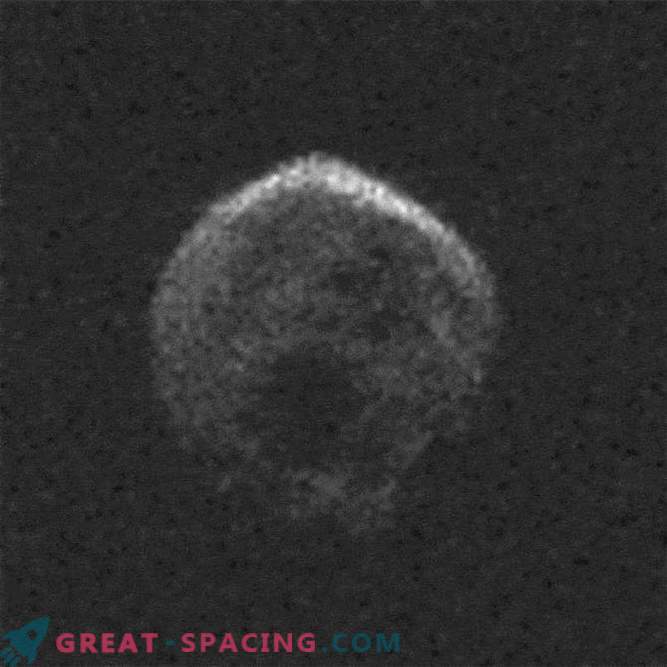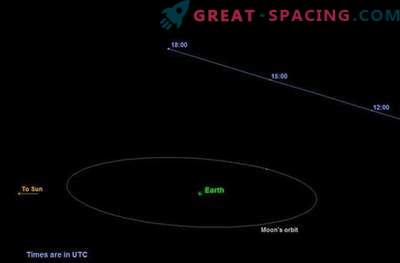
At about the 2nd of October 31, 2015, a huge creepy asteroid about 600 m (or 2,000 feet) in diameter swept near the Earth. The distance from it to our planet was not so large - about 1, 3 from the distance between the Earth and the Moon.
This object was discovered several weeks earlier. However, then he did not pose any danger to human civilization. Its considerable size and high speed of movement, equal to 78, 000 miles / h or 35 km / s did not frighten, however, the asteroid was named "creepy".
NASA astronomers decided to take the opportunity to find out more information about this new found asteroid during its passage past Earth. With the help of radar waves reflected from the surface of the object, scientists were able to form an approximate view of 2015 TB145, revealing some details. Otherwise, they were not noticed if the object was simply photographed. High speed would not allow to make a clear image.
“The radar waves reflected from the asteroid 2015 TB145 made it possible to see some parts of the surface that were not visible before. We were able to identify pronounced depressions and luminous spots. The last could be boulders or ordinary space crests,” said Lans Benner, a leading scientist at The research program of this asteroid at NASA, in the Jet Propulsion Laboratory in Pasadena, California. The images above were created using radar observations collected from broadcasts from a long-range space communications network with a 70-meter (or 270-foot) DSS-14 antenna located in Goldstone, California. The radar waves reflected off the DSS-14, and then they were united in the National Radio Astronomy Observatory at an altitude of 330 metros above sea level in Green Bank, West Virginia.

Animated GIF images are generated from radar data received at the Arecibo Observatory of the National Science Foundation. Six photographs were taken on October 30, 2015 at a resolution of 7.5 m or 25 feet per pixel.
Although these are far from the true "photos" of the asteroid, (There are assumptions: this is only the dried nucleus of the comet. Nothing has yet been proven.) The radar data revealed the approximate shape, size, speed of rotational motion, as well as the structure of the asteroid itself.
“Light and dark spots were found on its uneven surface. For example, the central crater may be the result of a collision with another space object,” said Dr. James Richardson, a radar scientist working on the planets, working in a group on the 2015 TB145 images in Arecibo.
The next visit to the object of our Earth will be in September 2018. It will take place at a distance of 38 million km (or 24 million miles) from the planet. This is a completely safe distance, so you can be confident in your safety.











































